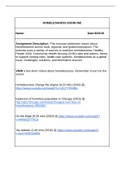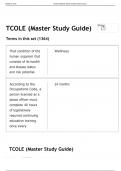Class notes
Pediatrics Exam 1 Study Guide
- Course
- NURS-307
- Institution
- Carson-Newman College
In this study guide, each topic for exam 1 is typed out and highlighted with the most important information. This includes pediatric topics such as Growth and Development, Nutrition, and EENT.
[Show more]








